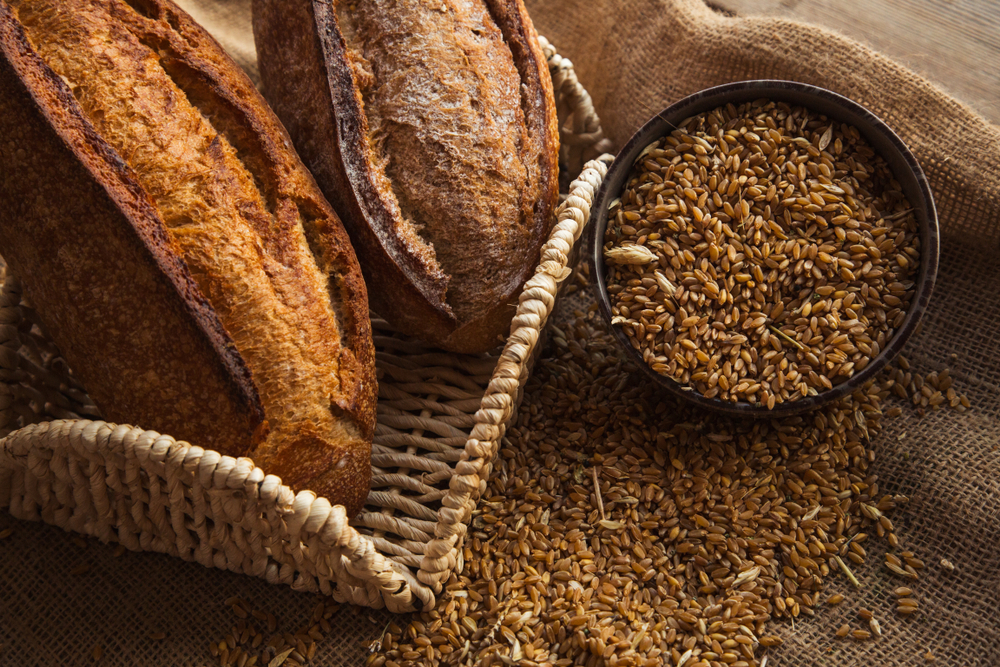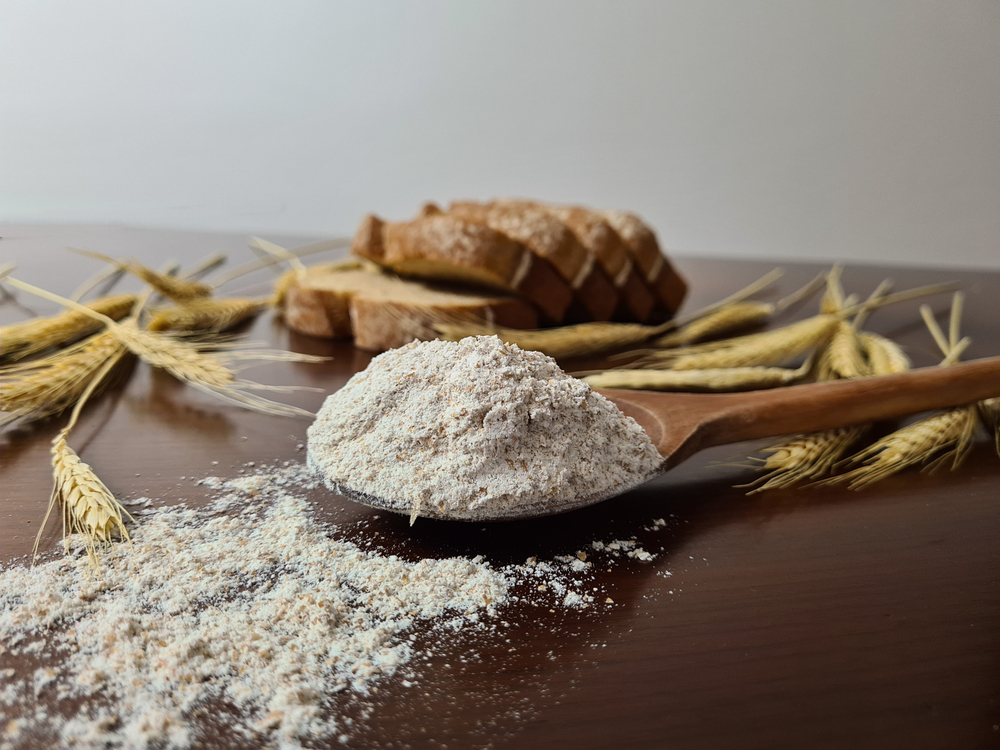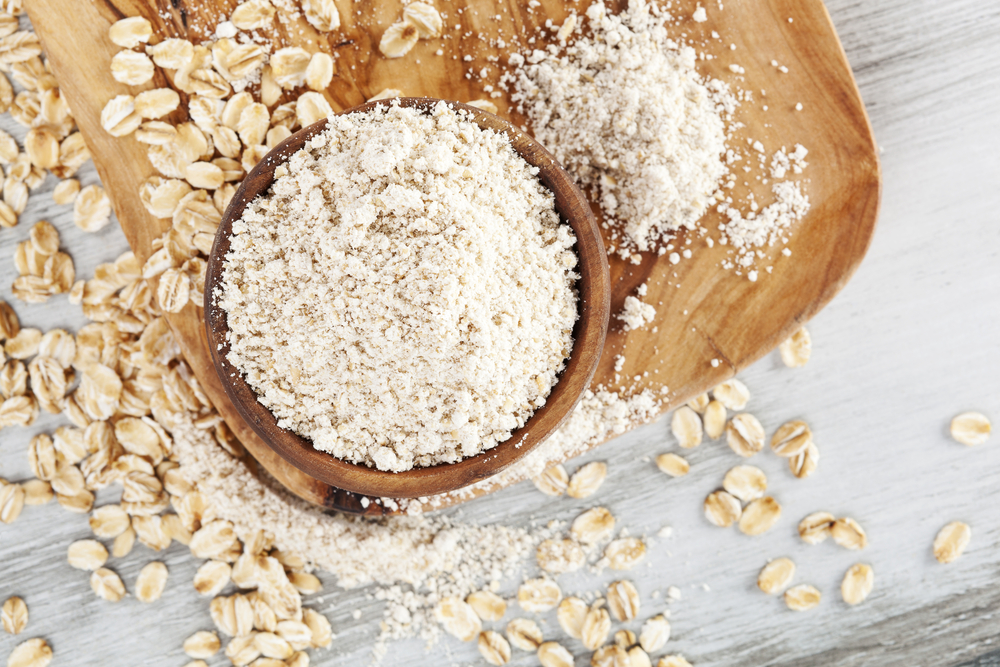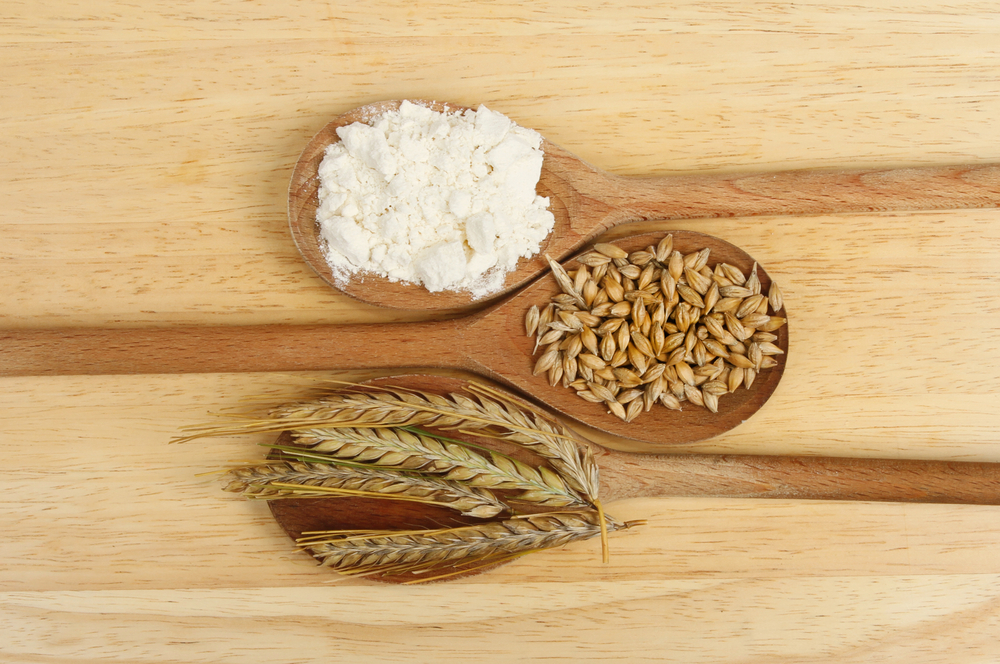The Best Alternative Grain Flours to Have in Your Pantry—If There’s Enough to Go Around
It’s been a weird year for wheat. Consider baking with oats, barley, rye and other grains instead.
The Best Alternative Grain Flours to Have in Your Pantry—If There’s Enough to Go Around
It’s been a weird year for wheat. Consider baking with oats, barley, rye and other grains instead.

Consider the rye loaf.by dturphoto, Shutterstock.
The image of rolling, golden wheat fields is quintessential—observed on the flag of Ukraine as well as in Woody Guthrie’s “This Land Is Your Land” lyrics—but 2022 is yielding many damaged or blighted fields. From the ongoing war in Ukraine to the significant drought stretching across North America, staple grains on which millions rely are no longer as reliable to harvest. And even when the drier-than-usual grains are processed, the resulting flour may act differently on a food chemistry level, leading to bad batches of croissants, as one Chicago baker recently found.
Although the wheat market has stabilized more after a rocky six months, there is significant uncertainty about wheat prices in the near future, all of which is further complicated by inflation and supply chain problems.
Thankfully, there are fantastic, underutilized grains you can turn to and help support a better agricultural system and diet, all the while insulating yourself from a stressed wheat supply. You might recognize these grains from your childhood—a certain Quaker-hatted character hawking oats or a deli counter pumpernickel teaching you to love a new kind of bread. Historically, these different varieties and grain blends were used to make crackers, bread and pastries.
Then All Purpose flour arrived on the scene. “Most flour was just this nameless, faceless, blended, sifted nothing,” says regional grain expert June Russell of the Glynwood Center for Regional Food and Farming. “If you look at what offerings at the supermarket have really been reduced to, it’s AP flour, what Karen Hess referred to as ‘an abomination.’”
Instead of wheat and “sifted nothing” flour, here are some grains with more character, resilience and oomph to try. With each of these alternative grains, it’s important to not get ahead of ourselves—or what their growers can produce. Many alternative grain farmers already have a hard time meeting demand. Being neighborly and leaning into experimentation can go a long way.
“Craft baking, from artisan bakers to home bakers, is very energetic and very interested in working with new farmers and new varieties,” Russell says. While production bakeries need consistency and volume, smaller bakers can more easily roll with the punches and test varieties or alternative flours on a smaller scale. If your local mill only has something rare or unexpected, consider it a blessing, not a curse.

Rye
If grains went to school, rye would be the goth on the sidelines. That’s not just because of its often darker hues and unique uses but its origins from the sidelines. In her cookbook Flour Power (to be published on August 30), Tara Jensen writes that “when grain was domesticated throughout the Middle East, barley and einkorn dominated the cultivated fields, but the wild edges—and the rye that grew in them—crept in.”
Today, rye is the spotlight of many dishes. You can find rye in alcoholic beverages such as whiskey or the Slavic kvass. It’s a staple in Nordic bakes, including cracker-like rusks, hole-punched flat loaves called ruisreikäleipä and Sami flatbreads that are hydrated with reindeer broth. But the most famous application of rye in the US has to be Jewish deli loaves, a treat so good that the trailblazing food writers Jane and Michael Stern traveled the country searching for the best loaf (Zingerman’s Deli in Ann Arbor won). Beyond deli loaves, maybe the next American rye creation has yet to be baked. Mika Ulmet, a baker at the bakery Wide Awake in Ithaca, New York, is looking forward to that future bake. “There hasn’t been much of a deep food culture in the US surrounding rye flour,” she says. “So, I think it’s exciting that there are bakers that are interested in bringing that from their own origin.”
For Ulmet, that means experimenting with sourdough ryes. Flour Power can help here, too. The book features an entire chapter on sourdough ryes, from buttermilk orange rye to a mountain rye using the mossy, cidery Wrens Abruzzi winter rye. Jensen also digs into the chemical differences in rye berries compared to wheat berries (many active enzymes, little gluten, more sugar) that make working with a starter and dough incredibly unique. If you want an exciting, malty, earthen flour, start with a light rye and see how it feels. Ulmet also points out the ecological perks of using rye. “It’s exciting in the sense that, as a crop, it provides so many different benefits to the farm,” she says. “It has weed-suppressing properties. It also holds soils, reduces erosion and is super drought-tolerant.”

Oats
While the world produces more oats than rye, much of it becomes animal feed. Seventy percent of EU oats grown in 2019 was for animal feed, compared to the 14 percent humans consumed. Yet, they often rank among people’s favorite whole grain, and for good reasons.
As Emma Zimmerman describes in her new cookbook, The Miller’s Daughter, freshly ground oats can taste buttery and cinnamony with some tannic notes and a level of freshness that’s hard to describe or achieve if you don’t have access to freshly rolled oats. As they’re high in oil and susceptible to rancidity, many processors neutralize the oil and with it that buttery taste. See if you have a local oat supplier and lean into buttery oats (whether store-bought or fresh) with recipes such as cacio e pepe riso-oat-o or savory pumpkin porridge from the book. As Zimmerman shows, there’s a big world of savory oats to explore.

Barley
Once you dive into the different ways grains can be processed, you’ll be amazed at the variety of options. Barley, for example, can be polished, hulled, flaked, milled and pearled, each method highlighting a different texture or flavor of the original whole grain. If you don’t know where to start eating barley, try the “week’s worth of barley without any boredom” section of Abra Berens’ cookbook Grist. Instead of boiling a pot of grains six times a week for 30 minutes (45 if the barley is hulled), Berens’ flowchart is a charming mix of salads, cakes, soups and even a spiced milk porridge.
A well-stored cooked grain can last at least three days in the fridge and longer if prepared into additional dishes. Barley grits can become griddle cakes, pearled barley can be stewed in cholent (a Jewish stew) and flaked barley can be used in place of rolled oats to bake granola. Barley’s benefits extend to its hardiness, too: You can find this grain growing everywhere from arctic environments to tropical plains. As breeding experiments push to quicken the already relatively short growing season for barley and help harvests survive intensifying temperatures, it has the potential to become an even more resilient crop. And, hopefully, it will be one you love to prepare.
Whatever comes next?
The world of alternative grains is as varied as it is vast. From sweet sprouted amaranth to polka-dotted buckwheat to creamy Bloody Butcher corn, you might have a hard time returning to All Purpose flour even after you work your way through rye, oats and barley. And with the food system twisting itself into knots, today’s a great day to start adding more variety to your pantry.
Follow us
This work is licensed under a Creative Commons Attribution-NoDerivatives 4.0 International License.
Want to republish a Modern Farmer story?
We are happy for Modern Farmer stories to be shared, and encourage you to republish our articles for your audience. When doing so, we ask that you follow these guidelines:
Please credit us and our writers
For the author byline, please use “Author Name, Modern Farmer.” At the top of our stories, if on the web, please include this text and link: “This story was originally published by Modern Farmer.”
Please make sure to include a link back to either our home page or the article URL.
At the bottom of the story, please include the following text:
“Modern Farmer is a nonprofit initiative dedicated to raising awareness and catalyzing action at the intersection of food, agriculture, and society. Read more at <link>Modern Farmer</link>.”
Use our widget
We’d like to be able to track our stories, so we ask that if you republish our content, you do so using our widget (located on the left hand side of the article). The HTML code has a built-in tracker that tells us the data and domain where the story was published, as well as view counts.
Check the image requirements
It’s your responsibility to confirm you're licensed to republish images in our articles. Some images, such as those from commercial providers, don't allow their images to be republished without permission or payment. Copyright terms are generally listed in the image caption and attribution. You are welcome to omit our images or substitute with your own. Charts and interactive graphics follow the same rules.
Don’t change too much. Or, ask us first.
Articles must be republished in their entirety. It’s okay to change references to time (“today” to “yesterday”) or location (“Iowa City, IA” to “here”). But please keep everything else the same.
If you feel strongly that a more material edit needs to be made, get in touch with us at [email protected]. We’re happy to discuss it with the original author, but we must have prior approval for changes before publication.
Special cases
Extracts. You may run the first few lines or paragraphs of the article and then say: “Read the full article at Modern Farmer” with a link back to the original article.
Quotes. You may quote authors provided you include a link back to the article URL.
Translations. These require writer approval. To inquire about translation of a Modern Farmer article, contact us at [email protected]
Signed consent / copyright release forms. These are not required, provided you are following these guidelines.
Print. Articles can be republished in print under these same rules, with the exception that you do not need to include the links.
Tag us
When sharing the story on social media, please tag us using the following: - Twitter (@ModFarm) - Facebook (@ModernFarmerMedia) - Instagram (@modfarm)
Use our content respectfully
Modern Farmer is a nonprofit and as such we share our content for free and in good faith in order to reach new audiences. Respectfully,
No selling ads against our stories. It’s okay to put our stories on pages with ads.
Don’t republish our material wholesale, or automatically; you need to select stories to be republished individually.
You have no rights to sell, license, syndicate, or otherwise represent yourself as the authorized owner of our material to any third parties. This means that you cannot actively publish or submit our work for syndication to third party platforms or apps like Apple News or Google News. We understand that publishers cannot fully control when certain third parties automatically summarize or crawl content from publishers’ own sites.
Keep in touch
We want to hear from you if you love Modern Farmer content, have a collaboration idea, or anything else to share. As a nonprofit outlet, we work in service of our community and are always open to comments, feedback, and ideas. Contact us at [email protected].by Pearse Anderson, Modern Farmer
August 7, 2022
Modern Farmer Weekly
Solutions Hub
Innovations, ideas and inspiration. Actionable solutions for a resilient food system.
ExploreExplore other topics
Share With Us
We want to hear from Modern Farmer readers who have thoughtful commentary, actionable solutions, or helpful ideas to share.
SubmitNecessary cookies are absolutely essential for the website to function properly. This category only includes cookies that ensures basic functionalities and security features of the website. These cookies do not store any personal information.
Any cookies that may not be particularly necessary for the website to function and are used specifically to collect user personal data via analytics, ads, other embedded contents are termed as non-necessary cookies.
All of these alternative flours are available in most grocery stores. You can substitute one of these for your white or whole wheat flour of choice. They’re also great for folks who are gluten-free.